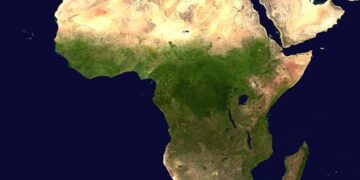To mark the 30th anniversary of Jurassic Park, Colossal CEO Ben Lamm shares how the movie influenced his company’s plans to de-extinct animals

‘Jurassic Park’: Richard Attenborough, Laura Dern, and Sam Neill, 1993. ©UNIVERSAL/COURTESY EVERETT COLLECTION
I remember the first time I saw dinosaurs roar to life on the big screen like it was yesterday. I was eleven years old and as I walked into the theater with a bag of popcorn and a large Coke, I was overcome with excitement. I rushed to get a good seat, right in the middle, and as soon as the first Brachiosaurus walked on the screen and John Hammond uttered those famous words, “Welcome to Jurassic Park,” my jaw dropped further than Dr. Grant’s. Holy shit. Yes, as an 11-year-old I thought, what if dinosaurs could be real?
In the thirty years since, I have watched time and again as science fiction became the pivotal catalysts for modern day science fact: 3D printers were first imagined in Star Trek; hover bikes came from Star Wars; The Jetsons invented video calls. And, I stand here now, in partnership with Dr. George Church of Harvard, and over one hundred scientists at Colossal, as we are now on the brink of de-extincting animals, just like they did at (queue the theme music) Jurassic Park.
When I first told my lawyer that I was interested in starting Colossal and bringing back the woolly mammoth, he asked me if I had read Michael Crichton’s book or seen Spielberg’s Jurassic Park movie. Since then, it’s a question that has come up in nearly every meeting with investors, journalists, and lawyers. I have, which meant that I spent a number of years thinking about if we should de-extinct animals before I set out to figure out if we could. (Thanks, Dr. Ian Malcolm.) Before ever set foot in a lab, I spent many years and countless hours thinking about the moral questions at the heart of the story.
And, with each successive year, I watched, heard, and learned about more and more animals dying due to climate change — a modern-day extinction. I came to the conclusion that the question is no longer should we practice de-extinction science but how long do we have to get it right. By 2050, we will lose nearly half of the world’s biodiversity. This includes the plants and animals that create ecosystems necessary for food production, carbon sequestration, and ecosystem stability. This means that the scary vision of the future isn’t one where dinosaurs escape Isla Nubar and fly to the mainland, putting a healthy planet at risk, but instead a future where there aren’t enough animals left to support food webs and ecosystems. And that includes humans, too. As Samuel L. Jackson’s Ray Arnold famously said, “Hold onto your butts,” because the future is going to be very weird.
But it is our belief that it is possible to safeguard against or even stop that fatalist future vision using a similar approach in the original movie with some slight variations. It all goes back to genetics and a lot of what I learned about when I first met George.
The first time I met with my now co-founder Dr. Church, a tall, lanky professor on the Harvard campus, I asked him if he really thought de-extinction was possible. He responded that he thought not only was it possible, but that along the way the effort would produce advanced technologies that would have a substantial impact on animal conservation at large. After a few in-person meetings I agreed, and was excited at not just de-extincting animals but at the possibility for endless discoveries that would arise from the pursuit of doing so. In the same way that wireless headsets, CAT scans, LEDs, the computer mouse, and thermal blankets are all products of going to the moon, de-extinction efforts have created breakthroughs already for both conservation and human healthcare.
In Colossal’s first few years of work, our woolly mammoth research alone has not only accelerated genetic rescue in elephants, but also, it is working to cure a deadly elephant virus that kills 25% of all baby elephants worldwide each year. The de-extinction toolkit is also establishing a genetic backup of all living elephant species, and building the necessary tools for elephant cloning and gestation. And now, unlike Dr. Hammond, who bought an island and hid his experiment from the world, governments are coming to us asking if we can help them to restore their critically endangered animals and help safeguard their keystone species. We know “life finds a way” (again, thank you, Dr. Malcolm), but we want to make sure that it is given a fair chance in a human-propelled rapidly-changing climate.
However, our work diverges from that in the Jurassic Park story in some aspects of the science, which I imagine all fans would find interesting.
First off, let me say you can’t get DNA from amber. Trust us. It’s porous and doesn’t preserve well. (Not that we haven’t tried eighteen or so times…) But you can get DNA from frozen specimens preserved in the permafrost, skeletons that have been well-preserved in caves, and even in museum specimens like the thylacine which was found well-maintained in a museum using ethanol.
 Colossal co-founders Ben Lamm and Dr. George Church HANDOUT
Colossal co-founders Ben Lamm and Dr. George Church HANDOUT
Secondly, we aren’t adding frog DNA to fill in the gaps in that of recovered dinosaur DNA. Instead we are taking that recovered fractured DNA, comparing its genome to that of a living species, and editing those findings into the genome of a living species that is already complete. For example, to create the woolly mammoth, we are editing the genes of the Asian elephant with those of the woolly mammoth to represent the cold-adaptive traits.
This is based on the work that Dr. Church has been developing for over the last 40 years. In fact, he has pioneered the field and has been so influential that a derivation of his early E.coli plasmid sequence work with Dr. Greg Sutcliffe was actually featured in the first Jurassic Park novel.
And third, for the superfans out there, the lysine dependence framed in the story as a way to keep the dinosaurs on the island won’t actually work. Basically all animals are already lysine dependent and nearly all foods contain lysine. So, this idea is problematic.
In the story, it’s explained that the dinosaurs can’t survive in the wild. Dr. Wu and his team “Inserted a gene that makes a single faulty enzyme in protein metabolism… Unless they get a rich dietary source of exogenous lysine-supplied by us… they’ll go into a coma within twelve hours and expire.” But Dr. Church’s Harvard team published in 2015 a more reasonable dependency, specifically using an amino acid which is not found in any food (called bipA) that could have been better suited for Dr. Wu’s planning. We’re not setting out to create dependencies in the animals we de-extinct. Instead, we are working to help repopulate species that will be able to survive on their own, but it is important to note how science keeps getting better, making the problems of the past less applicable today and in the future.
It amazes me that Jurassic Park is thirty years old, because the story holds the same power over me today that it did then. When I recently re-watched the movie, at home with a bowl of microwave popcorn and a margarita, I still felt in awe of what Steven Spielberg created. When Dr. Sattler and Dr. Grant happened upon the sick Triceratops, I still felt the same sadness overtake me. And when the Velociraptors attacked the main headquarters, I still feel equal parts fear and concern, even though I know exactly how the story will end.
From Rolling Stone US.
>>> Read full article>>>
Copyright for syndicated content belongs to the linked Source : RollingStoneIndia – https://rollingstoneindia.com/how-jurassic-park-is-becoming-a-reality-thirty-years-later/































